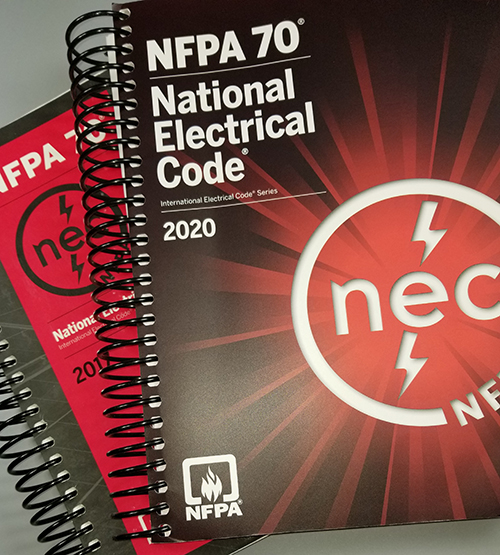The National Electrical Code

By: Dave Varga | Jan 11, 2022
The first electrical codes were written in the late 1800’s by various associations, including the New York Board of Fire Underwriters and the National Board of Fire Underwriters. Eventually, the National Fire Protection Agency was established and National Electrical Code was born. Have you ever thought about who writes the Code? Or how a Code can be changed? Let’s take a quick look at how you can be involved in the Code making process.
We Write the Code
Every three years the NFPA (National Fire Protection Association) 70, otherwise known as the National Electrical Code (NEC), is published with changes. As soon as the new Code is published, work begins on the next revision. This three-year Code update process begins with public input. Input is gathered from engineers, contractors, inspectors, electricians, and more, all of it begins on the NFPA website. Changes to be considered are submitted electronically and then sent through a lengthy process of committee reviews. The entire process can take well over a year to complete. The people that review the submitted changes are listed at the front of the code book. Committee members and technical staff are listed by name and position and/or company.
We Learn the Code
I feel that in the electrical industry we are content with the Code changes that are handed to us every three years. Keeping up with new Articles and the various changes, on top of our daily industry duties, doesn’t leave much time to think about rewriting the Code. The 2020 NEC has over 900 pages of information, including an incredible number of revisions, deletions, and new material.
We Change the Code
After thirty plus years in the trade, I had never even thought about submitting a change for the Code. Until a few years ago. I finally discovered something that should be changed! The change is not life or death, and it is certainly not earth shattering. Here it is:
Article 210, Branch Circuits, Article 210.52 (B) 2, Exception No. 1.
The exception says that we can use one of our small appliance branch circuits to feed an electric clock location in the kitchen or other area, as stated in Article 210.52 (B) 1. I haven’t seen an electric clock in a kitchen since the 1970’s! I would submit a change to remove the terms “electric clock” and replace it with “LED (Light Emitting Diode) under-cabinet lighting.” Today’s small LED under cabinet lighting probably has a wattage much less than that old electric clock.
Do you have any ideas for changes to the National Electrical Code? If so enter them below in the comments and enter them at the NFPA website. Remember, we write the Code, and we change the Code. To do this we must know the Code. See www.jadelearning.com to continue learning the Code and more.

